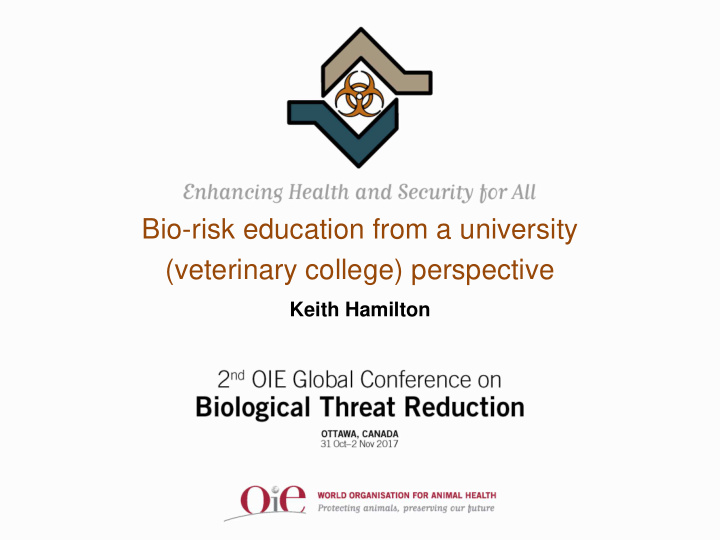



Bio-risk education from a university (veterinary college) perspective Keith Hamilton
Institutes of learning and knowledge
Networks Experience Competencies Careers
Veterinarians need a wide range of competencies
They need to deal with the unknown and the unexpected PROBLEM SOLVERS
Prel elim imin inary y res esult lts – mappin ing K-State vs. s. So Sokoin ine Curric iculu lum ref efle lects loc local l prio iorit itie ies and job job market Specific competencies in CORE courses Specific (11) S.1 Epidemiology S.2 Transboundary animal diseases (TADs) S.3 Zoonoses (including food borne diseases) S.4 Emerging and re-emerging diseases S.5 Disease prevention and control programmes S.6 Food hygiene S.7 Veterinary products S.8 Animal welfare S.9 Veterinary legislation and ethics S.10 General certification procedures S.11 Communication skills Higher differences in specific competencies coverage
How can bio-threat reduction be included in veterinary education?
CURRICULOMEGALY
STUDENT DEBT IS A BIG PROBLEM IN THE US of A
Some practical ideas • Take advantage of competency-based approaches • Include biothreat as a horizontal topic • Find creative ways to introduce the topic e.g. to clinical training, simulation exercises, electives
• Extra-curricula opportunities • Guest speakers (video-conference) • Electives and summer courses • Paid internships • Support for conferences
IMPORTANTLY! • Convince educators why biothreat reduction is relevant and important • Show students that there are opportunities e.g. internships, research, careers • Sustainable funding
Other ideas welcome § Acknowledgements: Rudovick Kazwala (SUA) Maulilio Kipanyula (SUA) Derek Mosier (K-State) Lina Mur Tesfaalem Sebhatu (K-State) Peggy Schmidt (K-State)
Recommend
More recommend